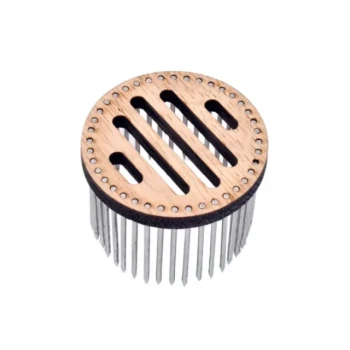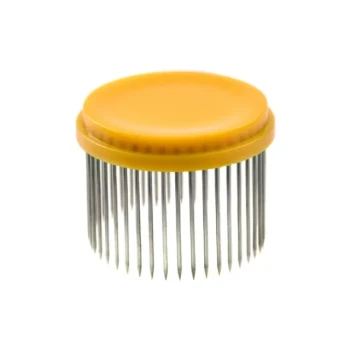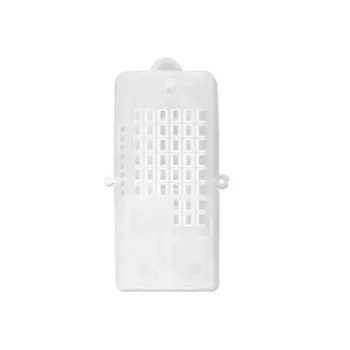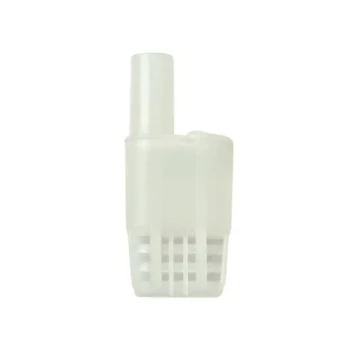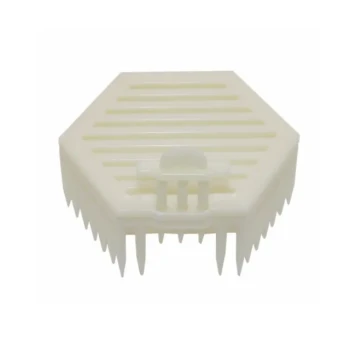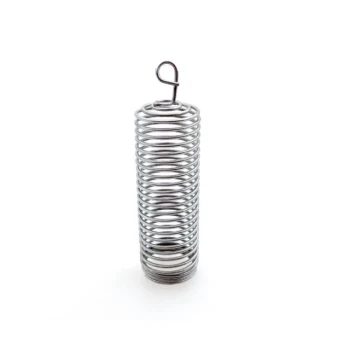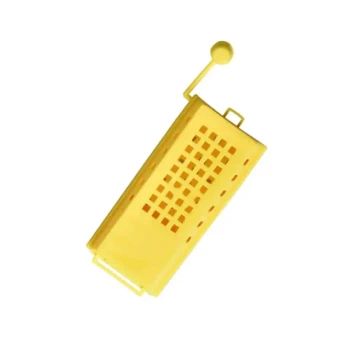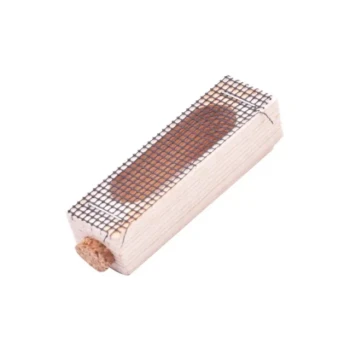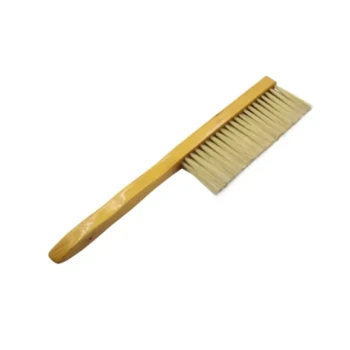In short, a press-in cage works by temporarily trapping the queen bee directly on the comb. It is a ring with a mesh top and small spikes on the bottom, which you gently press over the queen. This immobilizes her against the comb, allowing you to safely apply a small dot of paint to her thorax through the mesh without having to pick her up.
The core value of a press-in cage is that it allows a beekeeper, especially a novice, to mark a queen with minimal direct handling. This significantly reduces the risk of injuring or stressing the bee while still achieving the essential goal of making her easy to identify.
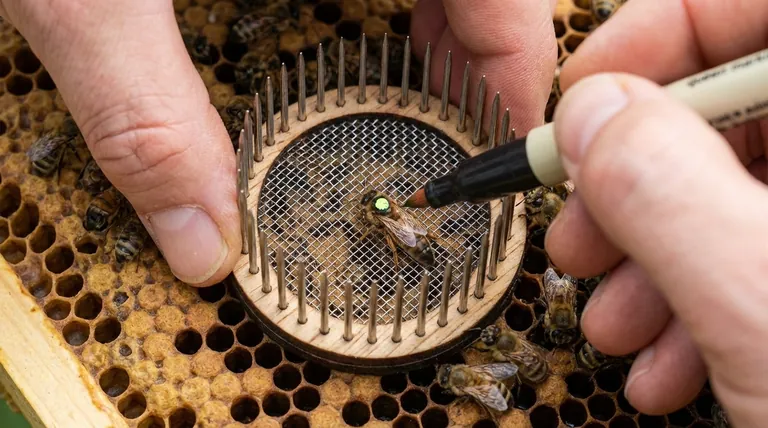
Why Marking Your Queen is a Critical Skill
Before detailing the mechanics, it’s vital to understand the purpose. Marking a queen isn't just about aesthetics; it's a foundational practice for effective hive management.
Faster, Calmer Inspections
An unmarked queen can be difficult to locate in a colony of tens of thousands of bees. A bright dot of color makes her stand out, dramatically shortening the time it takes to find her.
This efficiency means less time with the hive open, which reduces disturbance and stress on the colony.
Confirming Her Presence and Age
Seeing a marked queen provides immediate confirmation that your original, likely high-quality, queen is still present. If she disappears and is replaced by an unmarked queen, you know a supersedure or swarm event has occurred.
Marking also allows you to track her age. This is critical because younger queens are more prolific egg-layers and produce more cohesive pheromones, leading to a stronger, more productive, and less swarm-prone colony.
The Step-by-Step Marking Process
Using a press-in cage requires a calm, methodical approach. The process is straightforward but demands a gentle hand.
Step 1: Locate the Queen
Before you can mark her, you must find her. Look for fresh eggs and brood, as the queen will almost always be in that area.
For larger hives, you can place a queen excluder between brood boxes about a week prior. This will confine her to a single box, narrowing your search significantly.
Step 2: Position the Cage
Once you have located the queen on a frame, take the press-in cage. Carefully place the ring over her, ensuring you do not trap or spear her or any of the surrounding worker bees.
The goal is to give her space within the cage, not to pin her down.
Step 3: Gently Secure Her
With the cage positioned, gently press it into the honeycomb. The small spikes on the bottom of the ring will anchor it into the wax, creating a secure enclosure.
The queen will be safely trapped between the mesh top and the surface of the comb, unable to escape but with enough room to move slightly.
Step 4: Apply the Mark
Use a non-toxic, water-based paint pen of the appropriate color for the year. First, test the pen on your glove or another surface to ensure a smooth, consistent flow of paint.
Through the mesh, apply a single, small dot of paint to the center of her thorax (the middle section of her body). Avoid painting her head, wings, or abdomen.
Understanding the Trade-offs and Potential Pitfalls
While effective, the press-in cage is one of several tools, and success depends on proper technique.
Cage vs. Other Methods
The main alternative is a "queen marking tube," which requires you to pick the queen up and place her inside a plunger-style device.
The press-in cage's primary advantage is that it eliminates the need to pick up the queen. This is a major benefit for beekeepers who lack the confidence or dexterity to handle her directly, as it removes the risk of dropping or accidentally crushing her.
The Risk of Injury
The primary risk with a press-in cage is being careless during placement. You must press it down gently and ensure the queen is clear of the spikes. The goal is to anchor the cage in the wax, not to spear the bee.
Using the Correct Tools
Only use dedicated queen marking pens. These are specifically formulated to be non-toxic and safe for bees. Using nail polish or other paints can harm or kill the queen.
Making the Right Choice for Your Goal
Ultimately, marking your queen is about making your beekeeping more informed and efficient.
- If you are a new beekeeper: The press-in cage is an ideal tool because it removes the intimidating step of picking up the queen, building your confidence.
- If your primary focus is queen safety: This method minimizes direct handling, which is often the point where a queen is accidentally injured or lost.
- If your goal is maximum hive health: Using marking to track your queen's age allows you to know when she is past her peak, enabling you to requeen proactively and maintain a strong, productive colony.
Mastering this simple technique transforms hive inspections from a stressful search into a quick, confident assessment.
Summary Table:
| Key Feature | Benefit |
|---|---|
| Spikes on Bottom | Anchors securely into honeycomb |
| Mesh Top | Allows paint application without removing the cage |
| Temporary Confinement | Immobilizes the queen without direct handling |
| Ideal for Novices | Builds confidence by eliminating the need to pick up the queen |
Ready to mark your queens with confidence and precision? HONESTBEE supplies commercial apiaries and beekeeping equipment distributors with the high-quality, reliable tools needed for successful hive management. Our wholesale-focused operations ensure you get the right equipment, like press-in cages, to keep your colonies healthy and productive. Contact our experts today to discuss your beekeeping supply needs!
Visual Guide
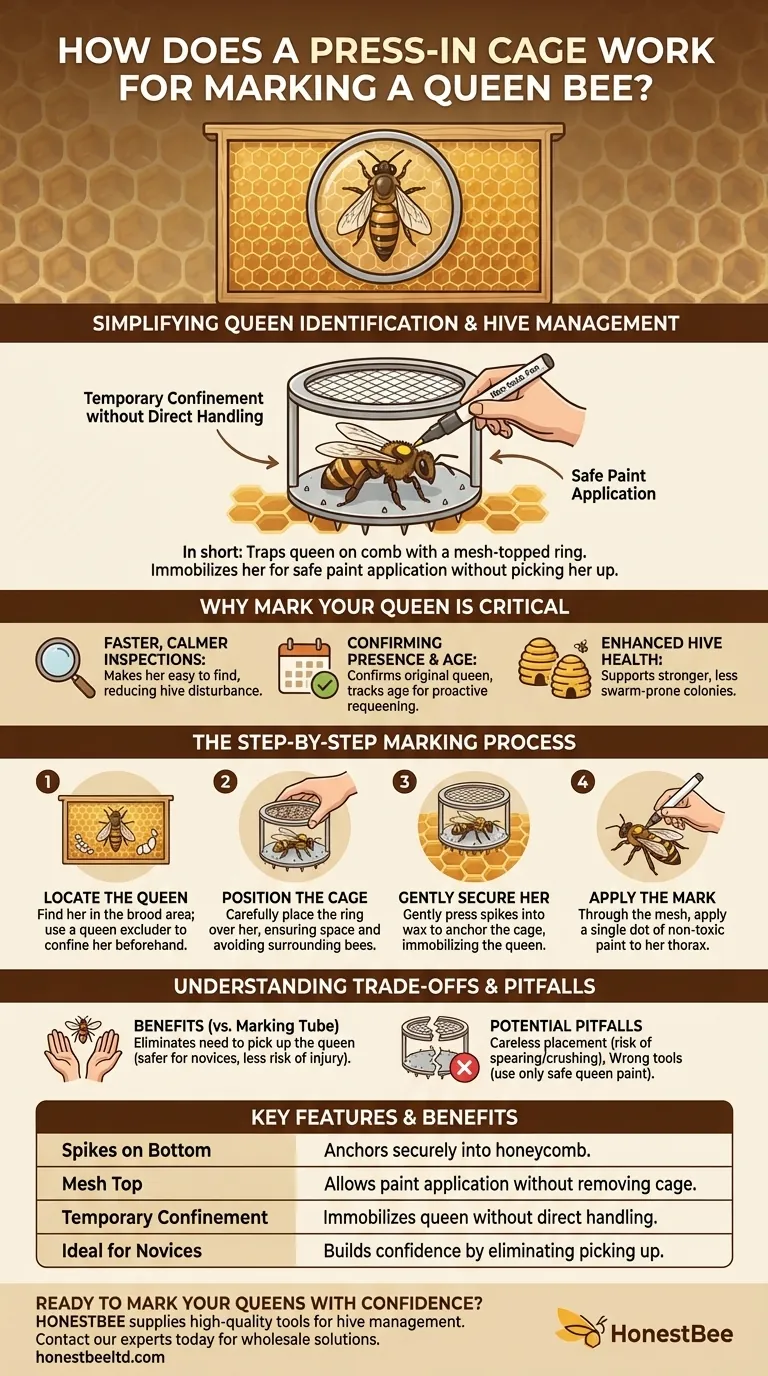
Related Products
- Premium Wood and Steel Push In Queen Cage
- Professional Round Push-In Queen Cage with Metal Tines
- Plastic Queen Marking Tube Cage with Plunger for Beekeeping
- Professional Multi-Functional Queen Bee Cage
- Wood and Mesh Push-In Queen Cage
People Also Ask
- What are the two main methods of queen introduction? Master Safe & Successful Queen Acceptance
- How is a press-in cage used for queen installation? Ensure High Queen Acceptance Rates in Your Apiary
- What are the steps to introduce a queen using a push-in cage? Ensure High Success for Your Valuable Queens
- Where should the queen bee's cage be placed in the hive? Maximize Acceptance in the Brood Nest
- What precautions should be taken when using press-in cages? Ensure a Safe Queen Introduction
